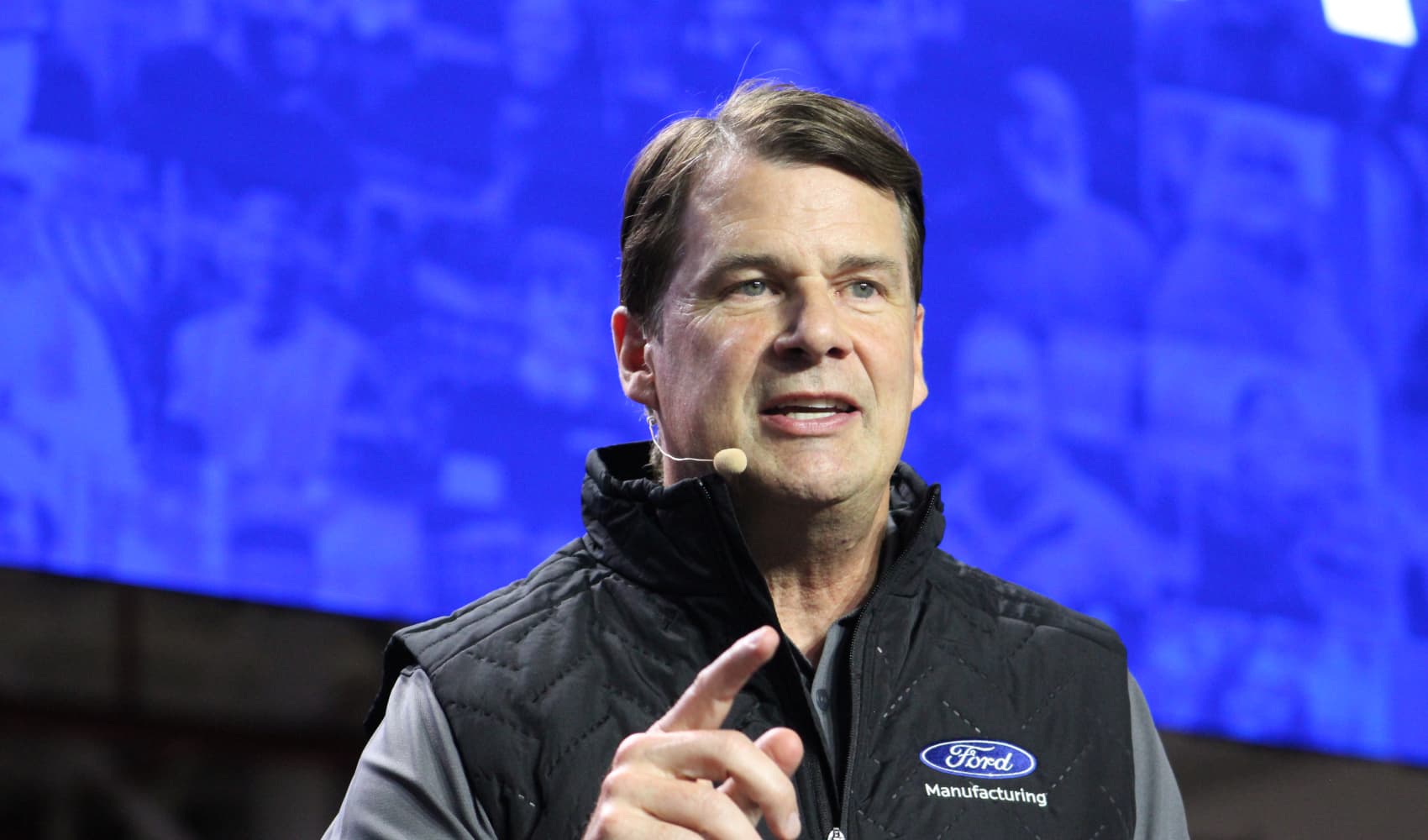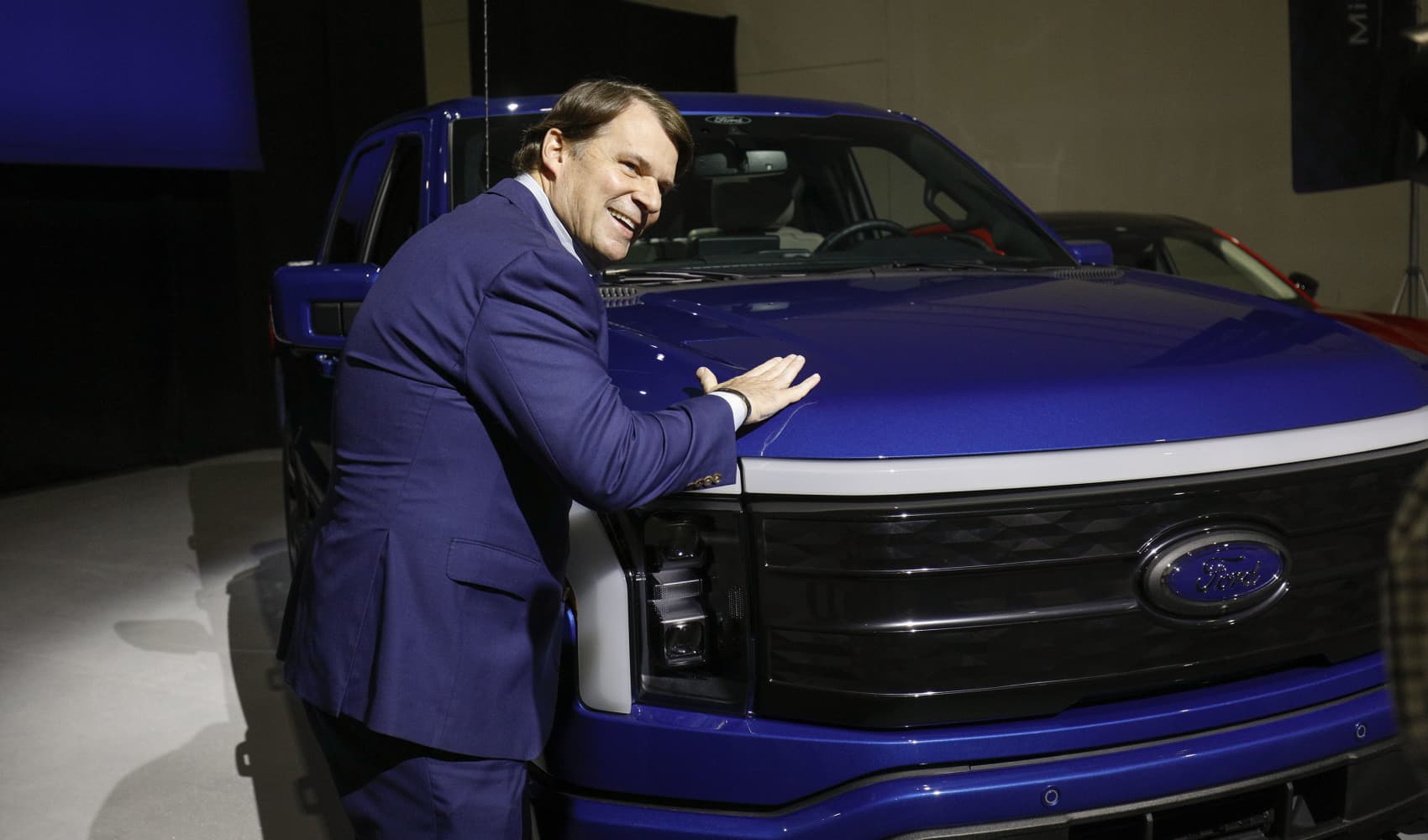Ford CEO: Trump's Tariff Fixes Need More Tweaks!
Ford's Push for Change: Navigating Tariffs and Shaping the Future of American Auto
Introduction: A Road Paved with Tariffs and Opportunities
Let's face it, the automotive industry is a complex beast. It's a global game of supply chains, manufacturing, and ever-changing consumer demands. And, of course, there are tariffs. President Trump's moves regarding tariffs on automotive parts have been a hot topic, and Ford CEO Jim Farley has weighed in. His message? It's a start, but more needs to be done. But what exactly does that mean for the industry and for us, the drivers?
Trump's Tariff Reprieve: A Step in the Right Direction?
President Trump’s executive order, designed to soften the blow of some automotive tariffs, has been met with cautious optimism. The order aims to reimburse automakers for some U.S. parts and alleviate the “stacking” of tariffs, a process where tariffs are applied multiple times as parts move through the supply chain. Is this a game-changer? Well, Farley suggests it's a helpful nudge, but not the final destination.
Farley's Perspective: Beyond Reprieves, Towards Comprehensive Policies
Farley isn't just looking for temporary fixes; he's advocating for a broader vision. He believes the auto industry needs “a comprehensive set of policies” to truly thrive. Think of it like this: a band-aid might stop the bleeding, but you need stitches for a deep wound. What kind of stitches does the auto industry need?
The Importance of Exports: Selling American-Made Globally
Farley emphasizes the need for policies that encourage exports. "It's essential" for U.S. policies to encourage exports. Why is this so crucial? Because a strong export market creates jobs, boosts the economy, and strengthens the overall competitiveness of the American auto industry. We need to be selling American-made cars worldwide.
Rewarding American Production: Incentivizing Investment
Beyond exports, Farley also highlights the importance of rewarding companies for their American production. This means creating an environment where it's economically beneficial to manufacture cars and parts right here in the U.S. Think of it as a carrot-and-stick approach. Let's make it enticing for companies to invest in American jobs.
The "Stacking" Problem: Untangling the Tariff Web
One of the major challenges facing automakers is the "stacking" of tariffs. This occurs when tariffs are applied to various components as they move through the supply chain, ultimately increasing the cost of the final product. Trump's executive order aimed to address this, but is it enough to truly untangle the web?
Impact on Consumers: Will Prices Go Down?
Ultimately, the question on everyone's mind is: how will all of this affect the price of cars? Tariffs can increase production costs, which can then be passed on to consumers. The hope is that by addressing the tariff issues, automakers can keep prices competitive and affordable for buyers. Will we see a significant drop in sticker prices? Only time will tell.
The Global Supply Chain: A Delicate Balance
The automotive industry operates within a complex global supply chain. Parts and components are sourced from all over the world, and any disruption to this chain can have ripple effects. Navigating tariffs and trade agreements requires a delicate balancing act to ensure smooth operations and minimize costs.
The Rise of Electric Vehicles: A New Landscape
The automotive landscape is rapidly changing with the rise of electric vehicles (EVs). This shift presents both challenges and opportunities for automakers. Government policies and incentives play a crucial role in promoting the adoption of EVs and fostering innovation in this emerging market.
Ford's Investment in the Future: Building Electric and Autonomous Vehicles
Ford is making significant investments in electric and autonomous vehicle technology. This commitment reflects the company's vision for the future of transportation and its determination to remain a leader in the industry. But how will these new technologies be affected by existing and future trade policies?
Labor and the Auto Industry: Protecting American Jobs
The auto industry is a major employer in the United States, and policies that support domestic production are essential for protecting American jobs. Farley's call for rewarding American production is directly tied to ensuring a strong and stable workforce in the automotive sector.
Trade Agreements: Re-Evaluating International Partnerships
Trade agreements play a critical role in shaping the global automotive market. The United States has been re-evaluating its trade agreements with various countries, and these negotiations can have a significant impact on the auto industry. Are these agreements helping or hindering American automakers?
The Role of Government: Balancing Regulation and Support
The government plays a multifaceted role in the automotive industry, from setting safety regulations to providing incentives for innovation. Finding the right balance between regulation and support is crucial for fostering a healthy and competitive market. It’s a fine line to walk.
The Impact of Technology: Innovation and Automation
Technological advancements are transforming the automotive industry. From self-driving cars to advanced manufacturing processes, technology is driving innovation and automation. How can policies be shaped to support this innovation while also addressing potential challenges related to job displacement?
The Future of the American Auto Industry: A Call to Action
The future of the American auto industry depends on a combination of factors, including government policies, technological innovation, and the ability of automakers to adapt to changing consumer demands. Farley's comments serve as a call to action for policymakers and industry leaders to work together to create a thriving and sustainable future for the sector.
Conclusion: Charting a Course for Automotive Success
Jim Farley's perspective is clear: while Trump's tariff reprieve is a welcome gesture, it's only a piece of the puzzle. The American auto industry needs a comprehensive and forward-thinking set of policies that encourage exports, reward domestic production, and address the complexities of the global supply chain. The road ahead requires collaboration, innovation, and a commitment to ensuring a strong and competitive automotive sector for years to come. Will they achieve it?
Frequently Asked Questions
- What exactly does "stacking" of tariffs mean in the automotive industry?
Stacking refers to the cumulative effect of tariffs being applied multiple times to different components as they move through the supply chain. This increases the overall cost of manufacturing a vehicle.
- How do tariffs affect the price of a car for the average consumer?
Tariffs can increase the cost of parts and materials used in manufacturing, which can then be passed on to consumers in the form of higher car prices.
- What are some examples of policies that would encourage American automotive exports?
Policies could include tax incentives for exporting vehicles, streamlining trade regulations, and negotiating favorable trade agreements with other countries.
- Why is it important for the U.S. to reward companies for American production?
Rewarding American production creates jobs, stimulates the economy, and strengthens the overall competitiveness of the U.S. auto industry. It encourages companies to invest in domestic manufacturing.
- Beyond tariffs, what are some other major challenges facing the American auto industry today?
Other challenges include the transition to electric vehicles, competition from foreign automakers, supply chain disruptions, and changing consumer preferences.

